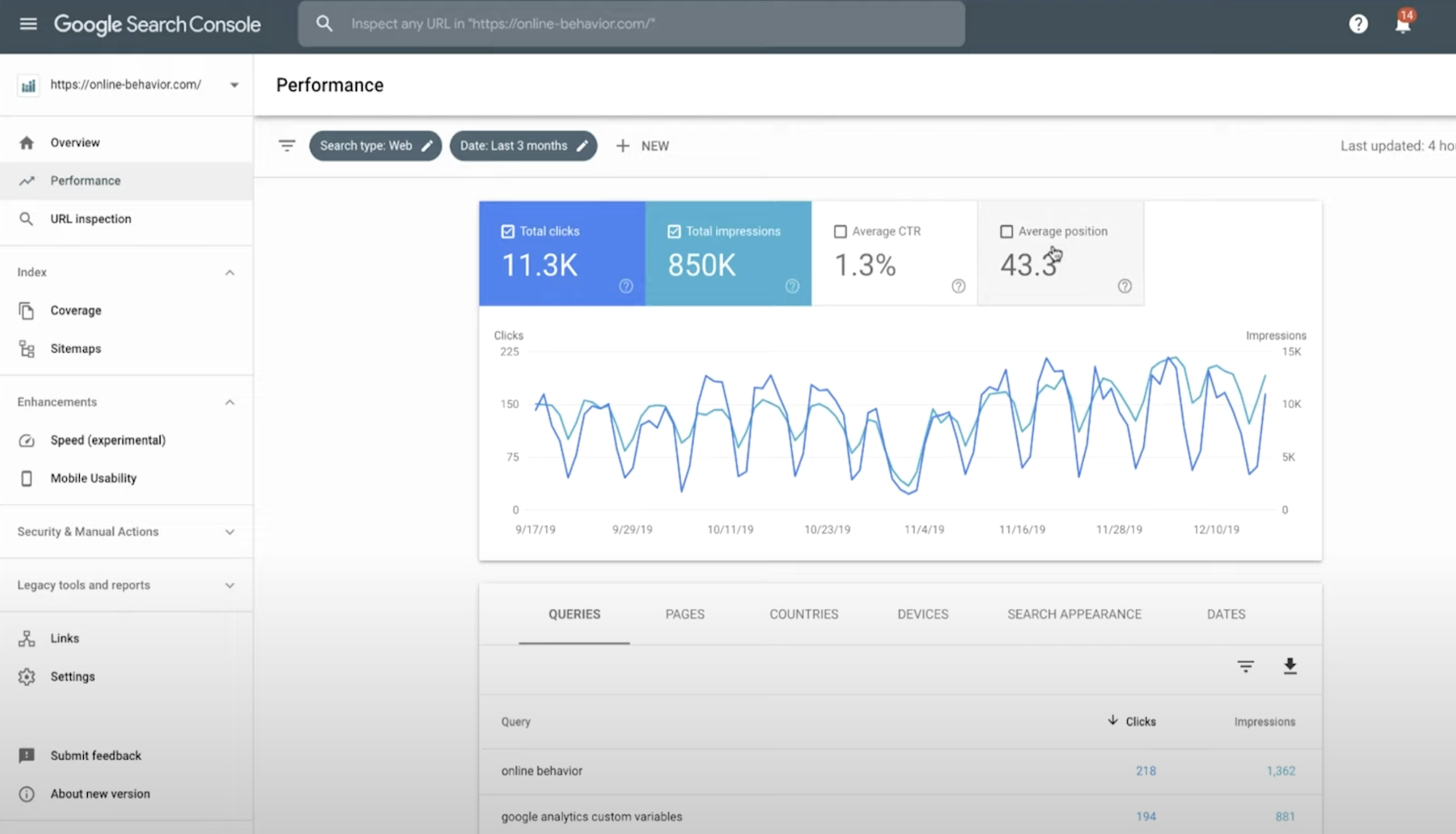Ever wondered why Apple hosts multiple versions of its site for different countries? It’s because of international SEO. This approach is crucial for brands aiming to make an impact on a global scale.
Creating an international SEO strategy requires thoughtful planning and execution. You’ll need to account for local search engines, cultural and language differences, and the increased competition that comes with cross-border expansion.
Ready to do it all and take your business to new heights? Here’s everything you need to know to get started.



What is international SEO?
International SEO is the practice of optimizing your website to make it more relevant and visible to audiences in different locations. You can use this strategy to achieve specific goals, such as:
- Expanding your market reach
- Building international brand awareness
- Increasing global sales
Implementing international SEO effectively bridges the gap between your business and potential customers across borders. It’s particularly useful for companies looking to attract customers from specific regions or linguistic groups.
How does international SEO work?
Google and other search engines tailor search results to match a user’s location and language. International SEO steps in here. It tells these search engines that your content is designed for users in certain countries or for those searching in specific languages.
How does it do this? Through a few key methods. First, there’s country or language targeting. This is straightforward—you’re basically flagging your content as ideal for people in, say, Germany, or those who speak Spanish.
Then come hreflang tags. These are bits of code that make it clear to search engines which language and region your content is meant for. Think of them as labels on your content, guiding search engines to show it to the right audience.
URL structures also play a part. You set these up to reflect the different regions and languages you’re targeting. It helps keep your site organized and makes it easier for search engines to understand who should see what.
In short, international SEO combines these elements—targeting, hreflang tags, and URL structures—to ensure your content reaches and resonates with your target audience.
Building your international SEO strategy in nine steps
1. Identify your target market
First, decide which countries to target. Consider where you already have sales, potential market needs, and logistics. You can use Google Analytics and Google Search Console to gain insights on your international audience.
In Google Analytics, click Audience > Geo > Location. This will bring up a map showing where most of your site traffic comes from.
Then, open Search Performance Report in Google Search Console and filter by country to see the top queries leading to your site. Analyze these queries to determine if visitors from a particular location are likely to become customers.

This whole process guides your international SEO efforts. You learn about regions where your site already generates interest. Use that information to tailor your SEO strategy to the audience in those markets.
2. Learn about search engines
To successfully expand internationally, you need to research each country or region you want to do business in. This includes finding out which search engines are popular there.
Different search engines lead in different countries. For example:
- Google is most popular in the US
- In China, Baidu is the leading search engine
- Yandex is the top choice in Russia
- In South Korea, people prefer Naver
Knowing the preferred search engine helps you optimize your website effectively for each market. For instance, when targeting users in China, you’ll want to add descriptive alt tags to images on your site (as Baidu relies on these tags to understand and rank images).
3. Determine your international SEO goals
Goal-setting is an important aspect of international SEO. Setting clear objectives helps you focus on boosting your website’s presence globally. For example, you may want to:
- Expand market reach in specific countries: Companies invest in international SEO to tap into new customer bases. This requires researching local market trends and user behaviors.
- Drive engagement across different cultures: The aim here is to connect with diverse audiences. This involves creating culturally relevant content, localizing language, and understanding regional preferences.
- Increase global sales and conversions: Businesses pursue this to grow their revenue from international markets. This requires optimizing the website for local currencies and payment methods, as well as tailoring marketing messages to align with local buying habits.
4. Conduct keyword research
Choosing the right keywords is crucial for SEO. For international markets, it’s not enough to just translate your keywords. You often need to adapt them to fit each market’s unique context.
Approach each keyword individually. Some will be trickier to adapt. For instance, in tech or fashion, many global markets use English terms. So, translating these might not make sense.
Learn what people in your target market are searching for. Then, adjust your keywords to these local terms. For example, terms for “winter clothing” might peak at different times of the year in Australia compared to Canada, due to opposite seasons.
When you adapt your keywords, use tools like Ahrefs and Google Keyword Planner to get an idea of their popularity. But remember, these tools aren’t always perfect. Their data shouldn’t be your only guide.
Andreas Hopfinger, SEO lead at Dropship.io , advises caution with keyword data for international SEO:

5. Create localized content
Content localization is the next step in optimizing your website for an international audience. Take the localized keywords you researched earlier and integrate them into your content. You’ll also want to add local idioms and language, plus local currencies, time zones, and phone numbers, if applicable.
When catering to multilingual audiences, make sure to translate your content accurately. Skip automated translations in favor of human translators. The latter excel at capturing the subtle details and core message of your content, ensuring it’s culturally appropriate and clear.
In terms of content strategy, let market research be your guide. For instance, if you’re selling fitness apparel in regions known for outdoor activities, highlight features like weather resistance and durability.
6. Establish dedicated URLs
For effective country targeting, set up a dedicated URL for each particular country. There are several methods to establish region-specific URLs. Here’s a rundown of the most common approaches:
Country code top-level domains (ccTLDs)
Businesses often use a country’s unique code as the final part of their site’s domain name. For instance, your US site could be www.letsrun.us, the French site www.letsrun.fr, and the German one www.letsrun.de. This approach offers an intuitive user experience. However, it requires purchasing and maintaining multiple domains, which can be a significant investment.
Subdirectories
Another method involves using subdirectories, also known as subfolders. For example, your French site could be accessed at www.letsrun.com/fr. This structure keeps all content within a single domain, simplifying maintenance. It also helps in building domain authority while allowing for regional targeting.
Subdomains
Subdomains appear before the primary domain name, such as “ca” in www.ca.letsrun.com. They are flexible and can be used to target specific languages or regions within a country. However, a major downside is that search engines treat each subdomain as a separate entity. This means they don’t benefit from the root domain’s established SEO authority, which can be a setback in your international SEO strategy.
7. Build backlinks
Building local backlinks is a key strategy in international SEO. Aim for backlinks from each market you’re targeting. Here are a few tactics:
- Solicit product reviews: Connect with local influencers and bloggers. Ask them to review your products. This move not only builds interest but also garners backlinks from within the community.
- Engage with local journalists: Make connections with media outlets and journalists in various regions. Pitch them unique stories or insights related to your business. This can lead to valuable press coverage and backlinks from credible local sources.
- Leverage content marketing: Craft content that resonates with your international audience. By providing value, you naturally attract backlinks from local forums and websites.
As for the link volume, it’s not as crucial as many SEOs believe. Andreas offers a valuable perspective on this:
“Based on my experience, you don’t necessarily need to secure links from multiple countries. Instead, focusing on acquiring links from a select few can be effective. This is because once you have established links from a few different countries, Google begins to recognize your website as an international player rather than exclusively a US-centric one. This recognition can boost your visibility and credibility in international search results.”

8. Use hreflang tags
Hreflang tags are HTML code snippets that tell search engines who your content targets. They enable you to specify language and country, ensuring the right audience sees the correct language version of your site.
To avoid search engine penalties for duplicate content in the same language, like English pages for the UK, US, and Australia, use hreflang tags. They help search engines understand each page’s specific target market. For instance, tag a US product page with “en-gb” to signal it’s tailored for UK readers.
Here’s an example of how to implement hreflang tags:
<link rel="alternate" hreflang="en-gb" href="https://www.shopify.com/uk/website/builder">
This ensures search engines correctly identify and display your content to users in different regions, even if the content is in the same language.
9. Leverage local social media platforms
Social signals have grown in importance ever since Google began prioritizing authoritative content—though they’re not explicit about it. This makes it crucial to build a social media presence in your target international markets.
Start by identifying which social networks are popular in each region. For instance, VKontakte is widely used in Russia, while Weibo is the preferred choice in China.
Next, set up social media profiles tailored to each of these markets. Use the local language and develop content that resonates with regional interests and trends. This step is about making your brand relatable and engaging to each unique audience.
Finally, link these social media accounts back to your website. This move drives traffic and tells search engines you’re really engaging with these regions.
Make an impact with international SEO
Jumping into international SEO might seem tough, but don’t let that scare you off. By tweaking your SEO to fit each market’s likes and needs, you can connect with a diverse range of customers.
It’s all about getting what each audience is into. So, take the leap, make those changes, and watch your brand grow across the globe.
International SEO strategy FAQ
What’s the difference between international SEO and local SEO?
International SEO is about reaching audiences worldwide, while local SEO focuses on a specific area. The main differences? Cost and competition. International SEO costs more and faces tougher competition, including big global companies. You also need a lot more content to reach people in different countries.
How do I identify potential international markets for my online business?
You can use Google Search Console and Google Analytics to evaluate your site’s performance in different markets. Examine the quality and volume of traffic from each country to determine the best places to expand your business.
How can I optimize my website for search engines like Baidu and Yandex?
To optimize for Baidu and Yandex, use local languages: simplified Chinese for Baidu, Russian for Yandex. Then, integrate keywords that are popular in these countries. This approach helps your site rank better on both search engines.
Is working with an international SEO agency beneficial?
It can be, since international SEO agencies know a lot about different markets. But, you can also handle everything on your own. Just learn about international SEO and use the right tools. This way, you save money and have full control over your SEO plan.






